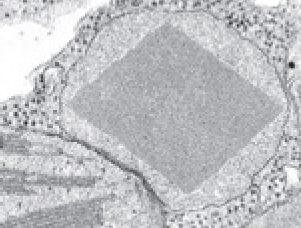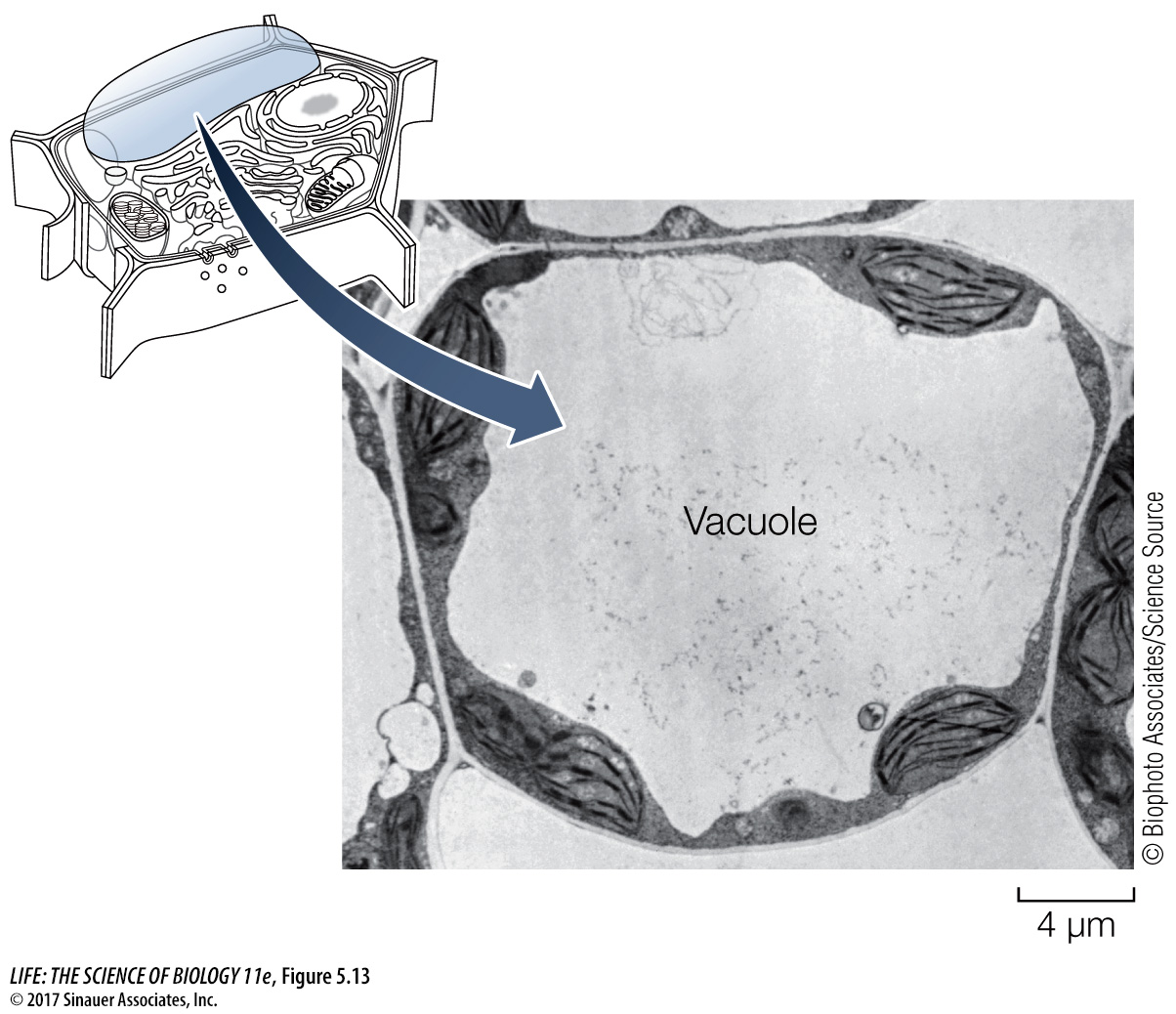There are several other membrane-enclosed organelles
There are several other organelles whose boundary membranes separate their specialized chemical reactions and contents from the rest of the cytoplasm: peroxisomes, glyoxysomes, and vacuoles.
 Peroxisomes are organelles that accumulate toxic peroxides, such as hydrogen peroxide (H2O2), that occur as by-
Peroxisomes are organelles that accumulate toxic peroxides, such as hydrogen peroxide (H2O2), that occur as by-
RH2 + O2 → R + H2O2 (cellular reactions)
2 H2O2 → 2 H2O + O2 (inside peroxisome)
Peroxisomes are small organelles, about 0.2–
As with lysosomes, there are rare inherited diseases in humans that involve peroxisomes. In Zellweger syndrome there is a defect in peroxisome assembly, and affected infants are born without peroxisomes. As you can imagine, a consequence of this is the accumulation of toxic peroxides, and the infants seldom live beyond 1 year of age.
Glyoxysomes are similar to peroxisomes and are found only in plants. They are most abundant in young plants and are the locations where stored lipids are converted into carbohydrates for transport to growing cells.
Vacuoles occur in many eukaryotic cells but particularly those of plants, fungi, and protists. They arise from the ER or Golgi apparatus. Plant vacuoles (Figure 5.13) have several functions:
Structure: In many plant cells, vacuoles take up more than 90 percent of the cell volume and grow as the cell grows. The presence of dissolved substances in the vacuole causes water to enter it from the cytoplasm, making the vacuole swell like a balloon. A mature plant cell does not swell when the vacuole fills with water, since it has a rigid cell wall. Instead, it stiffens from the increase in water pressure (called turgor), and this supports the plant body (see Figure 6.10).
Reproduction: Vacuoles contain some of the pigments (especially blue and pink ones) in the petals and fruits of flowering plants. These pigments—
the anthocyanins— are visual cues that help attract animals that assist in pollination or seed dispersal. - Page 98
Digestion: In some plants, the vacuoles in seeds contain enzymes that hydrolyze stored proteins into monomers. During seed germination, the monomers are used as food by the developing plant seedlings.
Storage: In addition to storing water, vacuoles store toxic molecules and waste products. Because they are poisonous or distasteful, these stored materials deter some animals from eating the plants and may thus contribute to plant defense and survival. An example is tannins, a class of polyphenols that are made in many plants and may be familiar to you as the aftertaste in tea and red wine. Their bitter taste deters predators, and their dark color acts like animal melanin to protect the plant from ultraviolet light damage. Tannins are made in the chloroplast and end up in the vacuole. A newly discovered organelle, appropriately named the tannosome, contains tannins (Investigating Life: Discovering a New Organelle, the Tannosome).

So far we have discussed numerous membrane-